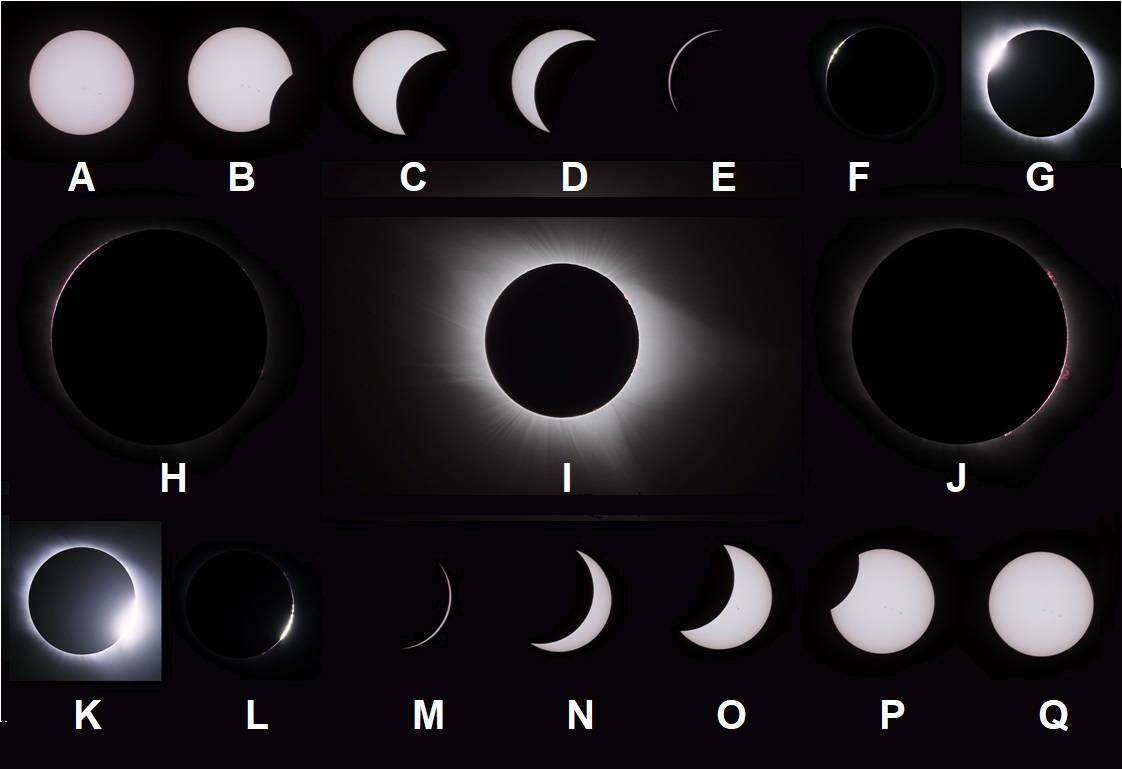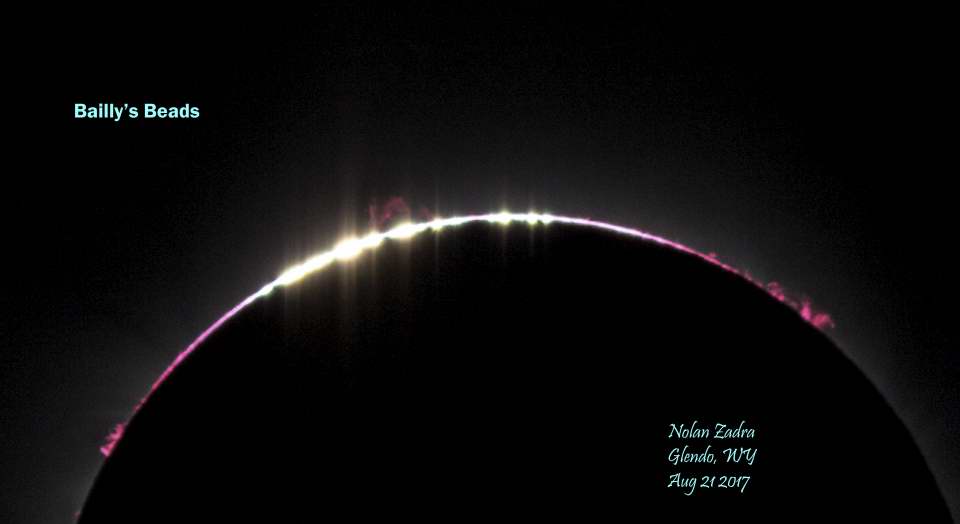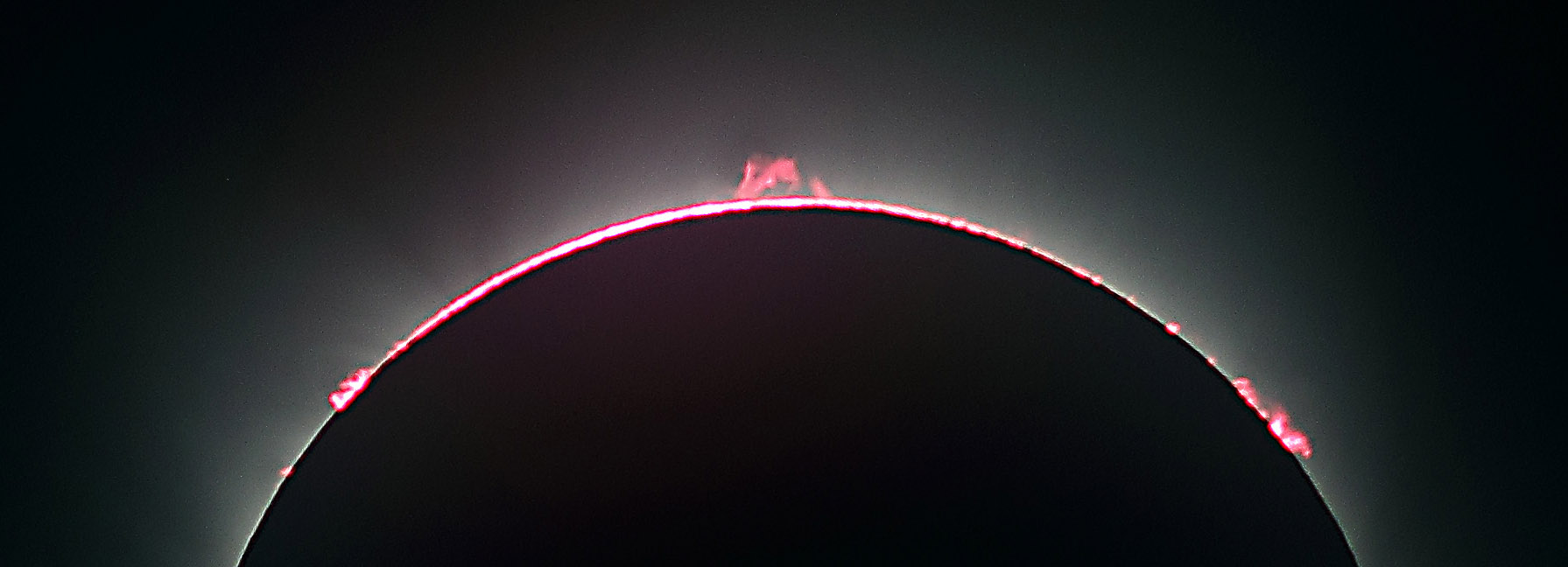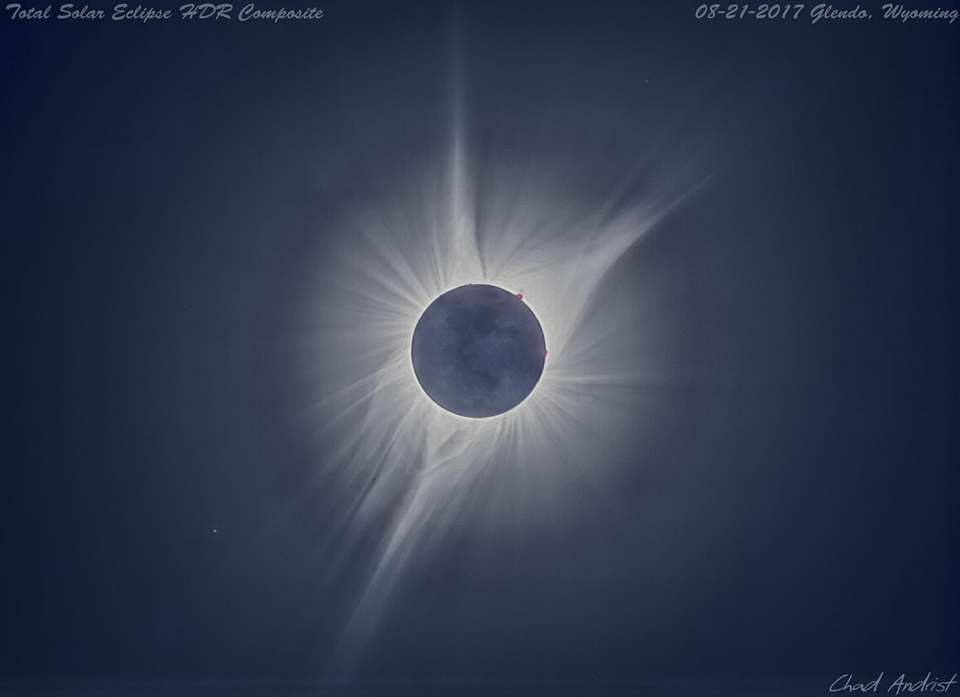Beginner's Guide
Solar System - Solar Eclipses
Observing Solar Eclipses
| Warning: Observing the Sun is dangerous! |
We hope this message sounds familiar because it is the same as we presented in our discussion about observing the sun. There is always inherent danger in trying to observe the sun. First, you should never look directly at the Sun with your eyes or even sunglasses. The same thing goes for binoculars and telescopes. But you will hear about it the most whenever there is a solar eclipse. This actually leads some people to believe that it is especially dangerous. However, it's not, but it is dangerous! But it can be done (cautiously) with the use of specialized commercial filters.
Solar Eclipse Viewing Safety
The safest way to observe the sun is through projection. But, frankly, it's not very satisfying when compared to direct viewing.
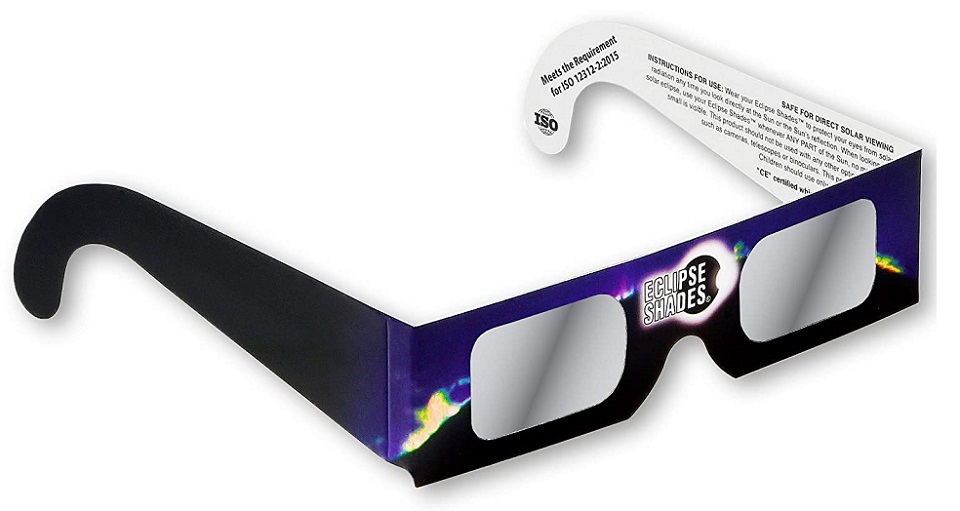 For naked-eye viewing, the relatively safe option is to purchase some eclipse glasses like the ones at the right. The feature you need to know
is that they must meet the ISO 12312-2 standard. Like the example on the right this should be printed on the glasses. Warning! Just that printed number
on the glasses is no guarantee of safety. During the 2017 eclipse there were many reports of counterfeit glasses being sold with the number imprinted,
but the filters did not meet the standard. The other issue is simple wear and tear. Before looking at the sun, you should always examine the glasses
to be sure there are no scratches that might compromise their safety. The other thing you should always do is a quick test. When you first look at
the sun through your eclipse glasses, make it just a quick glance. Does the sun seem overly bright? That's a bad sign that these are not safe.
For naked-eye viewing, the relatively safe option is to purchase some eclipse glasses like the ones at the right. The feature you need to know
is that they must meet the ISO 12312-2 standard. Like the example on the right this should be printed on the glasses. Warning! Just that printed number
on the glasses is no guarantee of safety. During the 2017 eclipse there were many reports of counterfeit glasses being sold with the number imprinted,
but the filters did not meet the standard. The other issue is simple wear and tear. Before looking at the sun, you should always examine the glasses
to be sure there are no scratches that might compromise their safety. The other thing you should always do is a quick test. When you first look at
the sun through your eclipse glasses, make it just a quick glance. Does the sun seem overly bright? That's a bad sign that these are not safe.
 For direct viewing of the sun (whether it's during an eclipse or not) you'll need a commercial solar filter that fits at the end of your telescope tube.
The reason this is so much safer is the intense light and heat of the sun never enters the telescope. They are available in various sizes.
For example, Orion Telescopes have 13 models from 3.68 inches to 12.31 inches.
For direct viewing of the sun (whether it's during an eclipse or not) you'll need a commercial solar filter that fits at the end of your telescope tube.
The reason this is so much safer is the intense light and heat of the sun never enters the telescope. They are available in various sizes.
For example, Orion Telescopes have 13 models from 3.68 inches to 12.31 inches.
But if you're fortunate to actually see a total solar eclipse, when the moon has fully covered the sun you don't need any filtering. You can view it in the sky and you can actually look at it in your telescope. Consequently, you'll want to be able to remove the cover fairly quickly once totality starts because the time of totality is extremely short. But! You have to be sure to stop looking before the sun returns.
Mechanics of a Solar Eclipse
A total solar eclipse is a spectacular sight and words alone cannot convey how great it is. If you have any chance to see a total eclipse, you must try to see it. Of course there's always the ugly prospect of cloudy weather, but you can improve your chances by selecting a location within the totality path where the weather forecast is the most favorable.
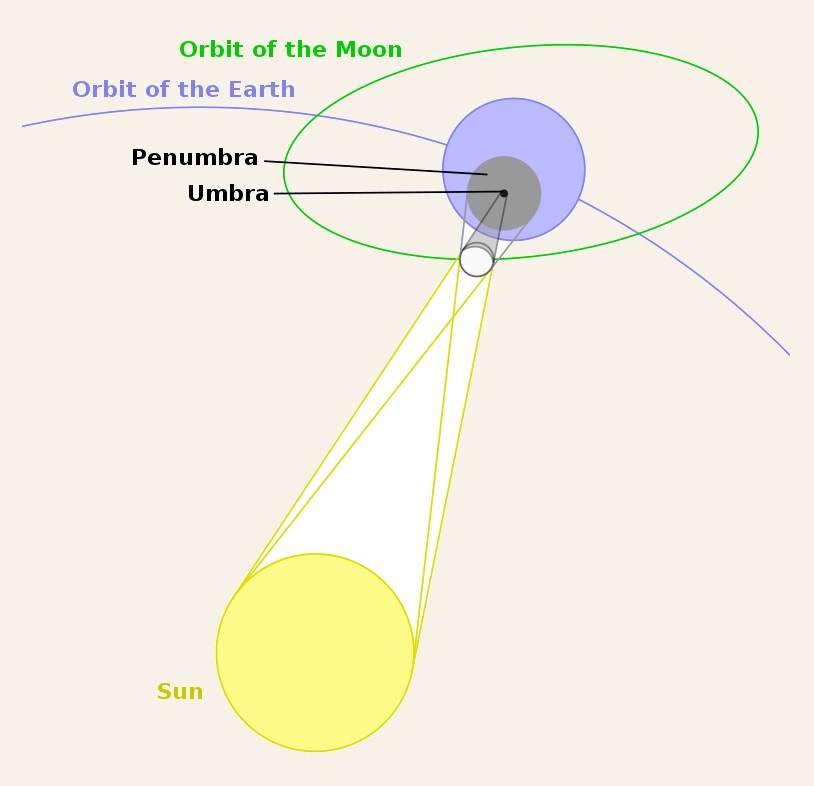 Solar eclipses happen at the time of the New Moon and specifically when the Earth moves into the shadow cast by the moon. There are two
shadows cast: umbra (which means dark shadow) and penumbra (which means light shadow).
Solar eclipses happen at the time of the New Moon and specifically when the Earth moves into the shadow cast by the moon. There are two
shadows cast: umbra (which means dark shadow) and penumbra (which means light shadow).
As you can see from the diagram (not to scale!) the umbra is pretty tiny by the time it hits the surface of Earth. And it moves along the surface at a speed of at least 1000MPH. Why is the size of that shadow on the Earth so small? It's because the apparent size of the Sun and the Moon in the sky is almost identical. But both the Sun and Moon's actual apparent diameters do change a bit and it's because of their elliptical orbits. The Moon varies from 29.3′ to 34.1′. The Sun varies from 31.5' to 32.5′. The implication is that sometimes the moon's apparent size is greater than the sun, but sometimes it's smaller.
Total Solar Eclipse Diagram
You get a total solar eclipse when the moon's apparent size is greater than the sun. The dark part of the shadow (the umbra) is the area where the moon will totally block the sun. The lighter shadow (the penumbra) which is very large on the surface of the Earth is where an observer would see a partial solar eclipse.
So what happens if the moon's apparent size is smaller than the sun? These are called annular solar eclipses.
Annular Solar Eclipse Diagram
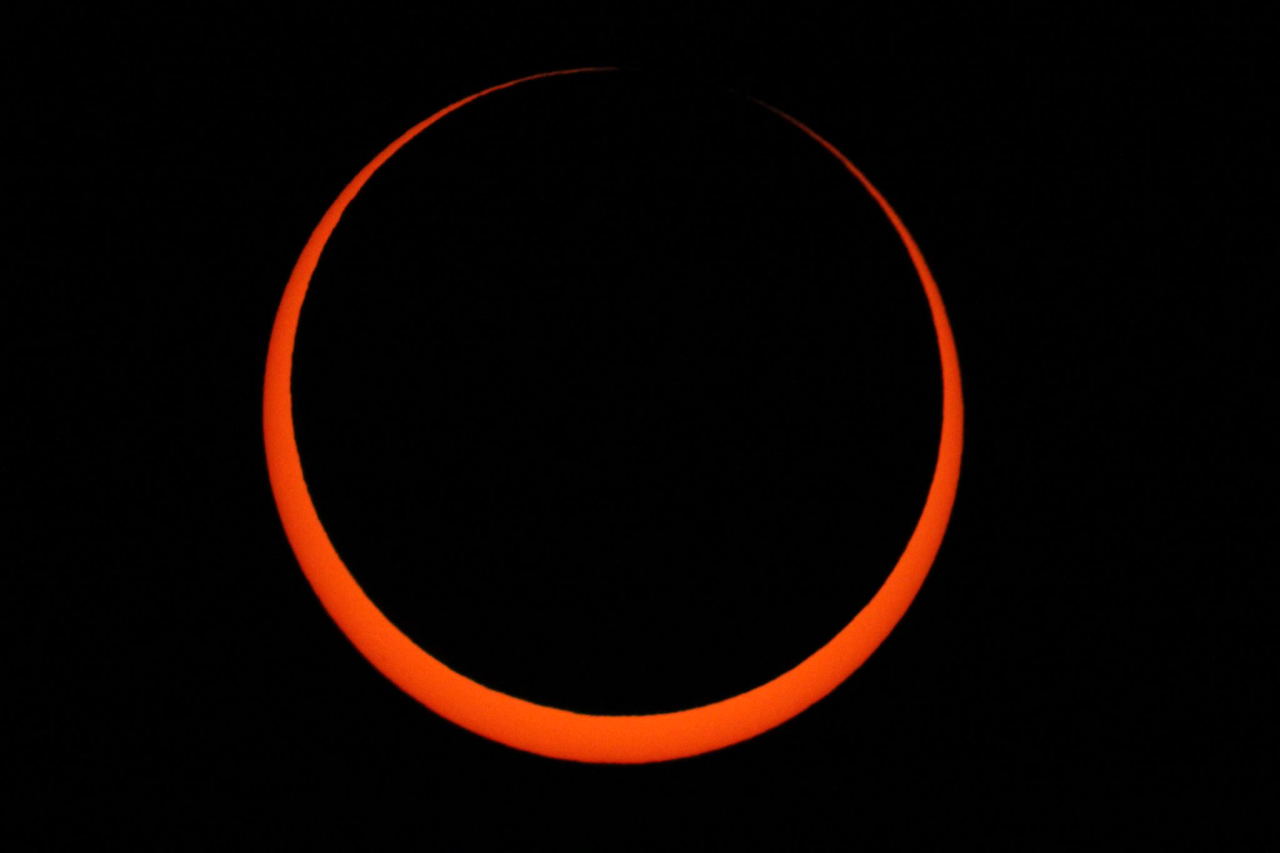 The dark part of the shadow (the umbra) would normally totally block the sun, but the Moon is too far away. Frankly, an Annular Eclipse
is a big disappointment, especially when compared to a total eclipse. But if you're in a position when the outer parts of the sun can be
seen, it is a pretty cool sight.
The dark part of the shadow (the umbra) would normally totally block the sun, but the Moon is too far away. Frankly, an Annular Eclipse
is a big disappointment, especially when compared to a total eclipse. But if you're in a position when the outer parts of the sun can be
seen, it is a pretty cool sight.
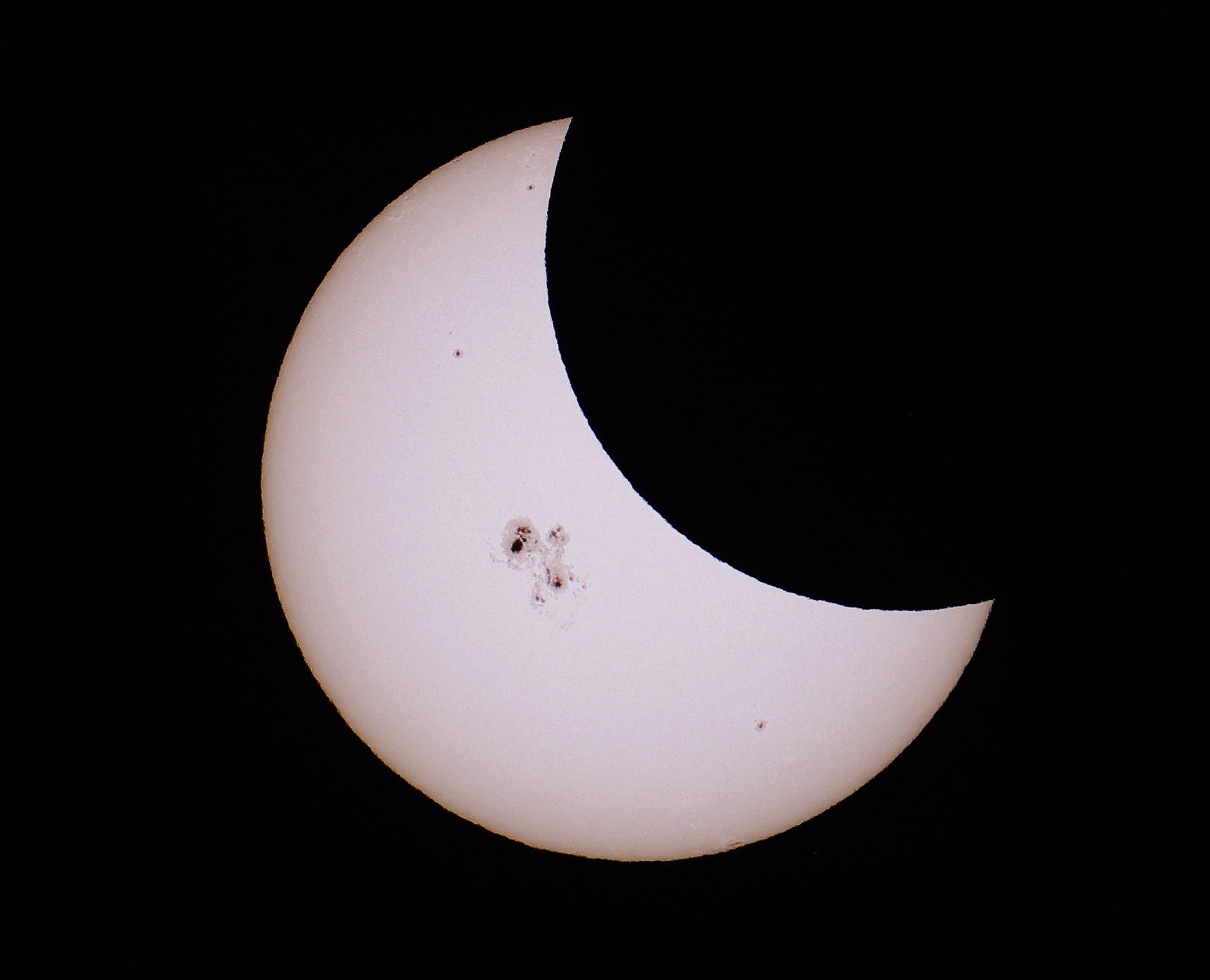 A part of any total or annular solar eclipse is a partial, although there are some solar eclipses that are only partial. A partial
solar eclipse is a little fun to view, but it's not worth spending a lot of time and money to travel to see one. The only neat effect to
see with a partial is if the Sun's coverage is over 80%. Then you'll notice a considerable dimming of your surroundings, and many many
describe it as looking through sun glasses.
A part of any total or annular solar eclipse is a partial, although there are some solar eclipses that are only partial. A partial
solar eclipse is a little fun to view, but it's not worth spending a lot of time and money to travel to see one. The only neat effect to
see with a partial is if the Sun's coverage is over 80%. Then you'll notice a considerable dimming of your surroundings, and many many
describe it as looking through sun glasses.
Location Location Location
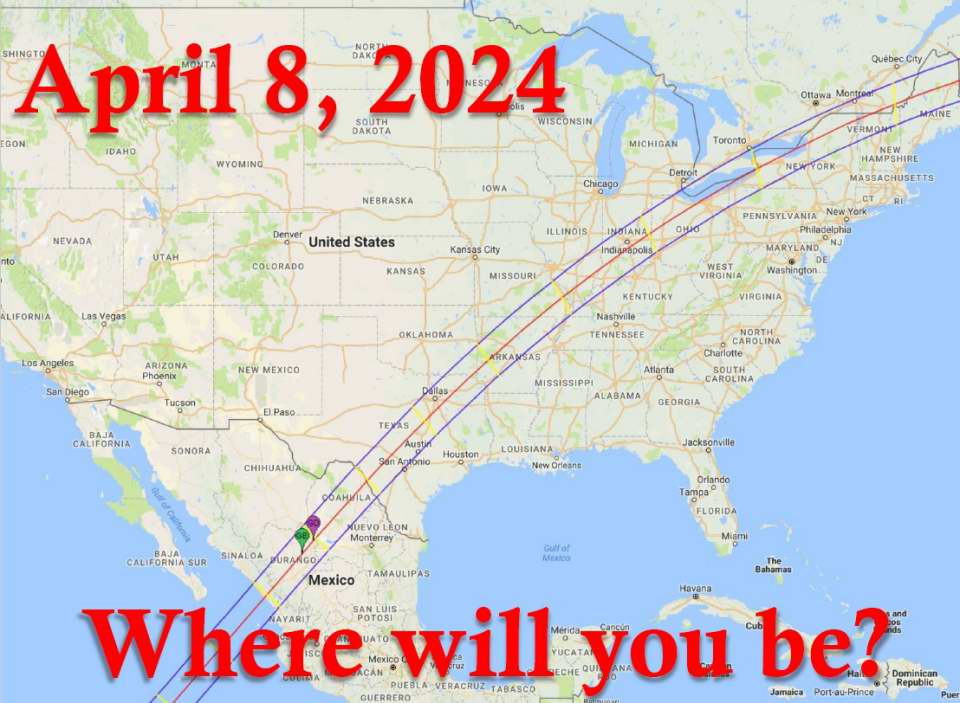 The next most significant total solar eclipse will be occurring on April 8, 2024 and that's because the path goes over a significant part of
the United States. We may not know where you're going to be, but the map on the left shows you where you should be. Definitely within the
path of totality (between the purple lines) and as near to the center line (red line) as practical. So that's your first location consideration.
Your second location consideration
is the weather forecast. Unfortunately April is traditionally a fairly cloudy month in many parts of the country. The more southwest parts of the
path (and especially the path through Mexico) the weather will probably be better. But, remember, there are no guarantees. The last location
consideration is how far are you willing to travel. And there is this special consideration involving the weather. The day or two before the event
the weather forecast will be much more reliable and you might want to drive to a specific location.
The next most significant total solar eclipse will be occurring on April 8, 2024 and that's because the path goes over a significant part of
the United States. We may not know where you're going to be, but the map on the left shows you where you should be. Definitely within the
path of totality (between the purple lines) and as near to the center line (red line) as practical. So that's your first location consideration.
Your second location consideration
is the weather forecast. Unfortunately April is traditionally a fairly cloudy month in many parts of the country. The more southwest parts of the
path (and especially the path through Mexico) the weather will probably be better. But, remember, there are no guarantees. The last location
consideration is how far are you willing to travel. And there is this special consideration involving the weather. The day or two before the event
the weather forecast will be much more reliable and you might want to drive to a specific location.
The last great eclipse over the United States was not that long ago on August 21, 2017. If you were on the center line of that eclipse, the average length of totality was about 2 minutes 30 seconds. This upcoming eclipse is a lot longer at 4 minutes and 30 seconds. That is because the moon will be a lot closer to Earth for that one.
Phases of a Total Solar Eclipse
| A: | Eclipse about to begin. |
| B-D: | First contact and the partial eclipse phases. Your surroundings will look normal until the Sun coverage reaches about 80%. At that point it will be noticeably darker, like you're wearing sunglasses. If you are near a tree with lots of leaves, you will see a myriad of mini crescent "suns" projected onto the ground. (See the photo below.) By 90% the temperature has dropped to the point where you will probably notice. About 5 minutes before totality, the shadow cast by the Moon causes the western horizon to darken as if a giant but silent thunderstorm is approaching. That shadow is coming at you between 1000 and 1500 MPH. |
| E: | The partial phase of the eclipse is almost over. It is now a lot darker as it's resembling twilight. The light is eerie. The shadows are extremely sharp because the sun is now so small, especially along the line of the crescent. You can imagine this is what it would look like at night if there was an extremely bright supernova. At this time you might also see the shadow bands. Birds may stop singing as the skies darken, and some animals may exhibit changes in eating or sleeping patterns. |
| F: | Baily's Beads. These are distinct balls of light visible at the edge of the Moon's circumference. Baily's Beads are caused by the Sun shining through craters and mountains on the surface of the Moon. These beads will flicker off one by one until one solitary point of light remains. |
| G: | Diamond Ring effect. The Sun's corona now suddenly becomes visible and with the last bit of sunlight topping through it makes for this dramatic effect that only lasts for a few seconds. |
| H: | Totality begins. The Suns corona will now be visible until the total phase ends with the emergence of the sun. At this point you may look directly at the sun without any filter. The same thing for your telescope and you will want to look through it. Not only will the corona look spectacular, if you're lucky and the solar activity is good you'll see some sun prominences on the leading edge. |
| I: | Through the totality phase the sky has become a lot darker and it looks like early evening. The bright stars are easily visible and normally the brightest object is Venus. It looks like twilight except the light completely surrounds you, not just in the west (like it is at sunset) or in the east (like it is a sunrise.) The reason is that 30-100 miles in any direction there is sunlight! If you're viewing the eclipse through a telescope the sun's corona will look alive. It isn't static like the photographs. |
| J: | Totality is nearly done. At this point everything that has happened will be seen again in reverse order. As the moon has moved across the face of the sun it's now on the other end so if there are any prominences on that edge they will become visible. |
| K: | The Diamond Ring effect. |
| L: | Bailey's Beads |
| M: | The Sun has made it's appearance and is an extremely thin crescent. The shadows are extremely sharp, especially along the line of the crescent. At this time you might also see the shadow bands. Birds still singing as the skies. If you're near enough to a farm that has roosters, they will crow. The big ominous shadow now is heading away to the east at 1000 to 1500 MPH. |
| N-P: | Partial eclipse phases as the moon moves away from the sun. |
| Q: | Eclipse over. |
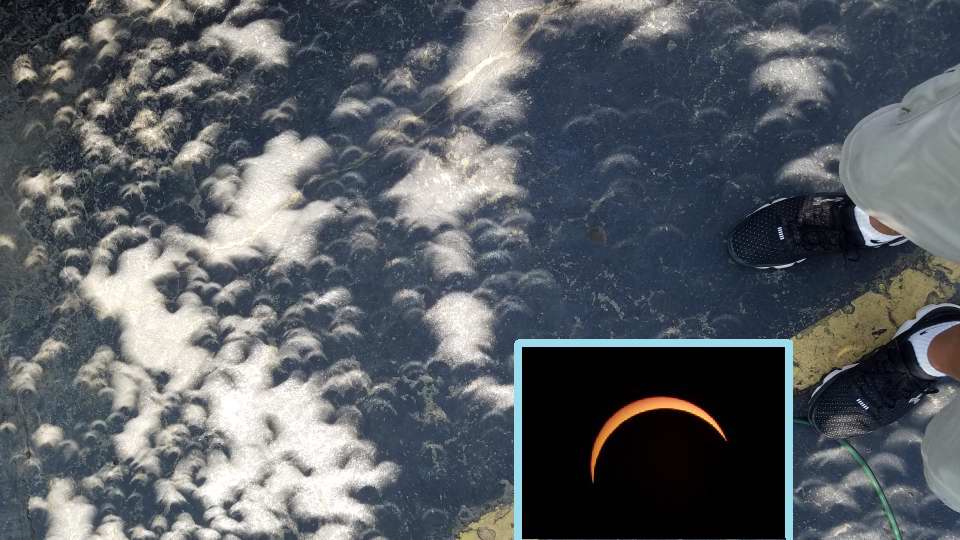 One of the big traditional ways to safely observe a solar eclipse is pinhole projection.
You can read about the technique and how to build
a simple projector here.
But the same pinhole projection can often be seen during an eclipse if light is being filtered through the leaves of a tree. This is what you're
seeing in the photo on the left. The inset shows what the eclipse phase
looked like in a telescope at the time the other photo was taken.
One of the big traditional ways to safely observe a solar eclipse is pinhole projection.
You can read about the technique and how to build
a simple projector here.
But the same pinhole projection can often be seen during an eclipse if light is being filtered through the leaves of a tree. This is what you're
seeing in the photo on the left. The inset shows what the eclipse phase
looked like in a telescope at the time the other photo was taken.
Prominences during the 2017 Total Solar Eclipse




